The history of macOS, Apple's current Mac operating system formerly named Mac OS X until 2011 and then OS X until 2016, began with the company's project to replace its "classic" Mac OS. That system, up to and including its final release Mac OS 9, was a direct descendant of the operating system Apple had used in its Mac computers since their introduction in 1984. However, the current macOS is a UNIX operating system built on technology that had been developed at NeXT from the 1980s until Apple purchased the company in early 1997.
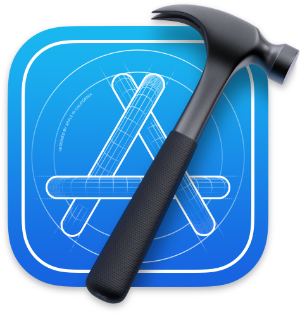
Xcode is Apple's integrated development environment (IDE) for macOS, used to develop software for macOS, iOS, iPadOS, watchOS, tvOS, and visionOS. It was initially released in late 2003; the latest stable release is version 15, released on September 18, 2023, and is available free of charge via the Mac App Store and the Apple Developer website. Registered developers can also download preview releases and prior versions of the suite through the Apple Developer website. Xcode includes command-line tools that enable UNIX-style development via the Terminal app in macOS. They can also be downloaded and installed without the GUI.
The Worldwide Developers Conference (WWDC) is an information technology conference held annually by Apple Inc. The conference is usually held at Apple Park in California. The event is usually used to showcase new software and technologies in the macOS, iOS, iPadOS, watchOS, and tvOS families as well as other Apple software; new hardware products are sometimes announced as well. WWDC is also an event hosted for third-party software developers that work on apps for iPhones, iPads, Macs, and other Apple devices. Attendees can participate in hands-on labs with Apple engineers and attend in-depth sessions covering a wide variety of topics.

Panic Inc. is an American software and video game company based in Portland, Oregon. The company specializes in macOS and iOS applications and began publishing video games in 2016.

Things is a task management app for macOS, iPadOS, iOS, watchOS, and visionOS made by Cultured Code, a software startup based in Stuttgart, Germany. It first released for Mac as an alpha that went out in late 2007 to 12,000 people and quickly gained popularity. The following July, when the App Store launched, it was among the first 552 apps available for iPhone. It was then released alongside the iPad in 2010, the Apple Watch in 2015, and the Apple Vision Pro in 2024.
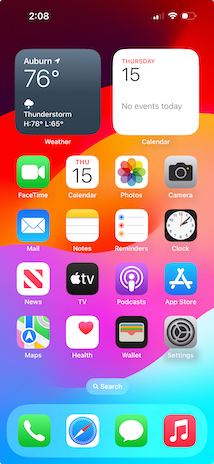
iOS is a mobile operating system developed by Apple Inc. exclusively for its smartphones. It was unveiled in January 2007 for the first-generation iPhone, launched in June 2007.
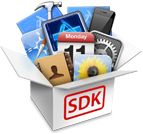
The iOS SDK, formerly the iPhone SDK, is a software development kit (SDK) developed by Apple Inc. The kit allows for the development of mobile apps on Apple's iOS and iPadOS operating systems.
iOS is a mobile operating system developed by Apple Inc. and was first released as iPhone OS in June 2007, coinciding with the launch of the first generation iPhone. iPhone OS was renamed iOS following the release of the iPad, starting with iOS 4. With iOS 13, Apple began offering a separate operating system, iPadOS, for the iPad. iOS is also the foundation of the newer audioOS and tvOS, and shares some of its code with macOS. New iOS versions are released every year alongside new iPhone models. From its launch in 2007 until 2010, this occurred in June or July, since then, new major versions are released in September or October. Since the launch of the iPhone in June 2007, there have been 17 major releases of iOS. The current major version of iOS is iOS 17, released on September 18, 2023.
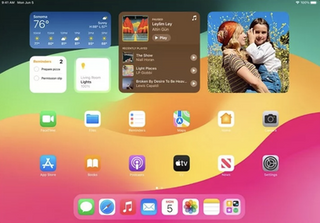
iPadOS is a mobile operating system developed by Apple Inc. for its iPad line of tablet computers. It was given a name distinct from iOS, the operating system used by Apple's iPhones to reflect the diverging features of the two product lines, such as multitasking. It was introduced as iPadOS 13 in 2019, reflecting its status as the successor to iOS 12 for the iPad, at the company's 2019 Worldwide Developers Conference.

Craig Federighi is an American engineer and business executive who is the senior vice president (SVP) of software engineering at Apple Inc. He oversees the development of Apple's operating systems. His teams are responsible for delivering the software of Apple's products, including the user interface, applications, and frameworks.

Health is a health informatics mobile app, announced by Apple Inc. on June 2, 2014, at its Worldwide Developers Conference (WWDC). The app is available on iPhone and iPod Touch devices running iOS 8 or later, and on iPads running iPadOS 17 or later. The application holds health data such as blood pressure measurement and glucose levels, but also holds physical tracking data such as step counts. It can pull data from fitness trackers, smartwatches, smart scales, and other devices.

Apple News is a news aggregator app developed by Apple Inc., for its iOS, iPadOS, watchOS, and macOS operating systems. The iOS version was launched with the release of iOS 9. It is the successor to the Newsstand app included in previous versions of iOS. Users can read news articles with it, based on publishers, websites and topics they select, such as technology or politics.

tvOS is an operating system developed by Apple Inc. for the Apple TV, a digital media player. In the first-generation Apple TV, Apple TV Software was based on Mac OS X. Starting with the second generation, the software is based on the iOS operating system and has many similar frameworks, technologies, and concepts.

Airmail is an email client for iPhone and macOS by Italian company Bloop SRL. It was based originally on the Sparrow client.

macOS Sierra is the thirteenth major release of macOS, Apple Inc.'s desktop and server operating system for Macintosh computers. The name "macOS" stems from the intention to unify the operating system's name with that of iOS, watchOS and tvOS. Sierra is named after the Sierra Nevada mountain range in California and Nevada. Its major new features concern Continuity, iCloud, and windowing, as well as support for Apple Pay and Siri.

Weather is a weather forecast app developed by Apple Inc., available on iOS since the release of the iPhone and iPhone OS 1 in 2007. It allows users to see the conditions, forecast, temperature, and other related metrics of the device's current location, as well as a number of other cities. A version of Weather is also available for watchOS; however, it is limited in functionality. Weather was made available on more devices across the Apple ecosystem with the releases of iPadOS 16 and macOS Ventura, where weather data from Apple was previously only available as a widget or through Siri.

iOS 13 is the thirteenth major release of the iOS mobile operating system developed by Apple Inc. for the iPhone, iPod Touch and HomePod. The successor to iOS 12, it was announced at the company's Worldwide Developers Conference (WWDC) on June 3, 2019, and released on September 19, 2019. It was succeeded by iOS 14, released on September 16, 2020.
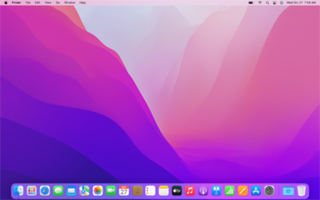
macOS Monterey is the eighteenth major release of macOS, Apple's desktop operating system for Macintosh computers. The successor to macOS Big Sur, it was announced at WWDC 2021 on June 7, 2021, and released on October 25, 2021. macOS Monterey was succeeded by macOS Ventura, which was released on October 24, 2022.
SwiftUI is a declarative user interface framework for building user interfaces for iOS, iPadOS, watchOS, tvOS, visionOS and macOS, developed by Apple Inc. for the Swift programming language.













